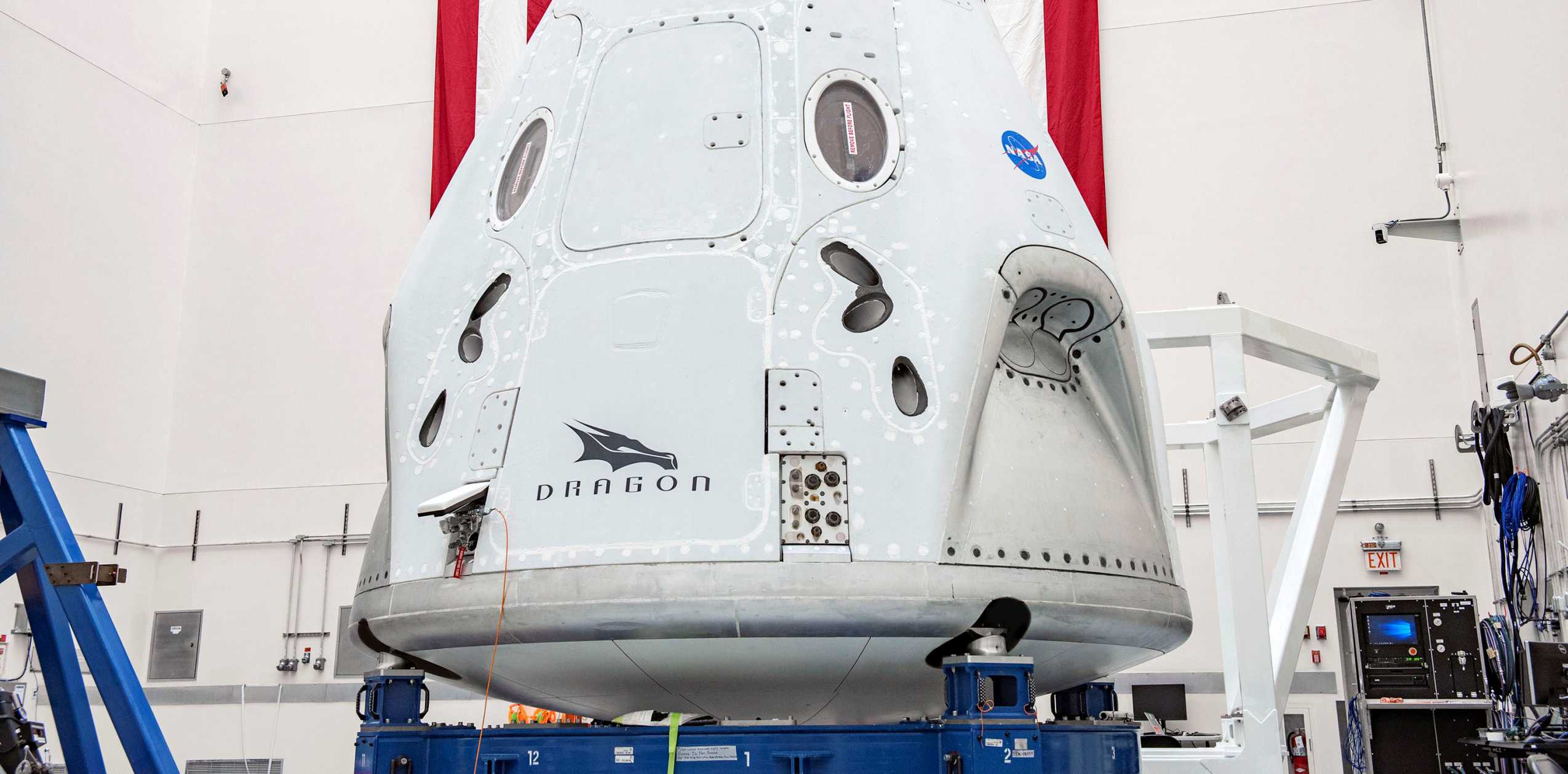
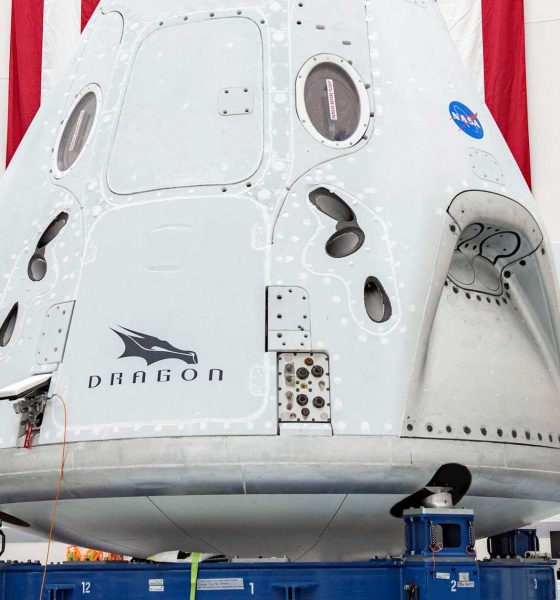
News
SpaceX Crew Dragon NASA astronaut launch debut will carry a surprise payload
SpaceX has plans to include a surprise payload aboard Crew Dragon’s inaugural NASA astronaut launch, scheduled to lift off as soon as May 27th.
Per a NASA update published on May 13th, SpaceX and the space agency remain on track for what will arguably be the company’s single most important mission since its founding in 2002. Over the last 6-9 years, depending on how one counts, SpaceX and NASA have worked relentlessly to develop the next-generation Crew Dragon spacecraft, a dramatically different variant of the extensively flown Cargo Dragon (Dragon 1).
Although the spacecraft’s next launch will be both its and SpaceX’s first crewed launch ever, Crew Dragon has already completed two successful abort tests in 2015 and 2020, as well as a flawless orbital launch debut in March 2019. Just shy of 16 months and no shortage of technical hurdles since that uncrewed orbital debut, the third Crew Dragon spacecraft completed by SpaceX (capsule C206) and a brand new Falcon 9 rocket are ready to make history. Now, on top of the many historic milestones attached to Crew Dragon’s Demo-2 mission, NASA astronauts Bob Behnken and Doug Hurley will be joined by a mosaic of Earth created by tens or even hundreds of thousands of students – both young and old – from around the world.

As of May 15th, per NASA’s latest blog post updates, SpaceX’s plethora of Crew Dragon Demo-2 hardware appears to be just shy of 100% ready for flight, at least from a technical perspective. As of May 12th, NASA and SpaceX officially cleared Crew Dragon’s interior and both astronauts’ space suits for flight, effectively closing out the crew capsule. That reusable Crew Dragon capsule was attached atop an expendable trunk section – responsible for providing power with a solar array and thermal management with radiators – around May 1st.
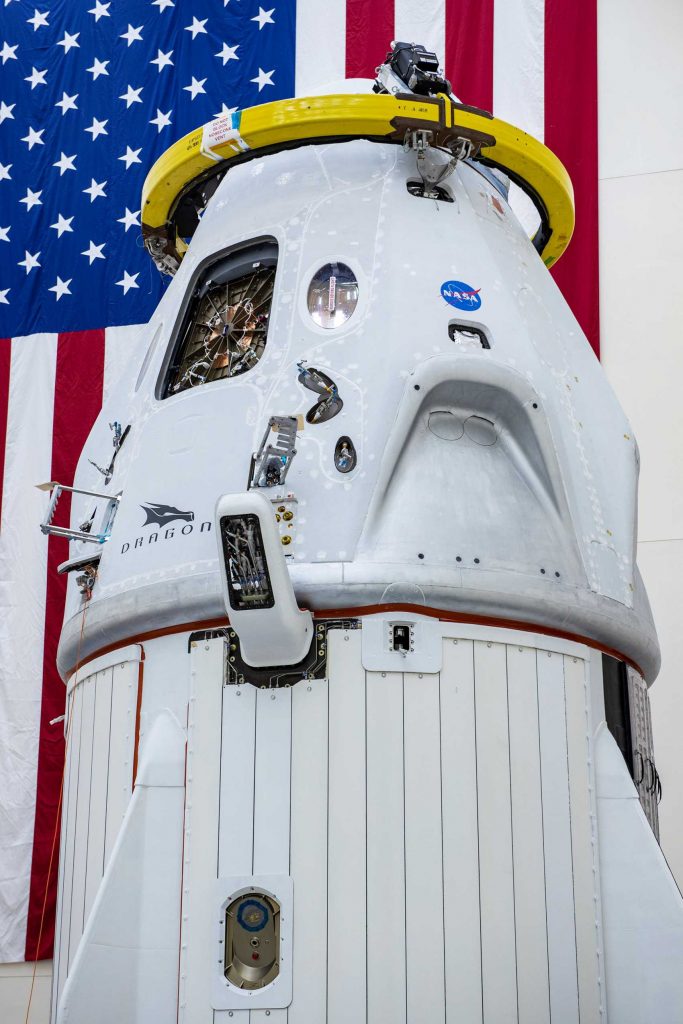
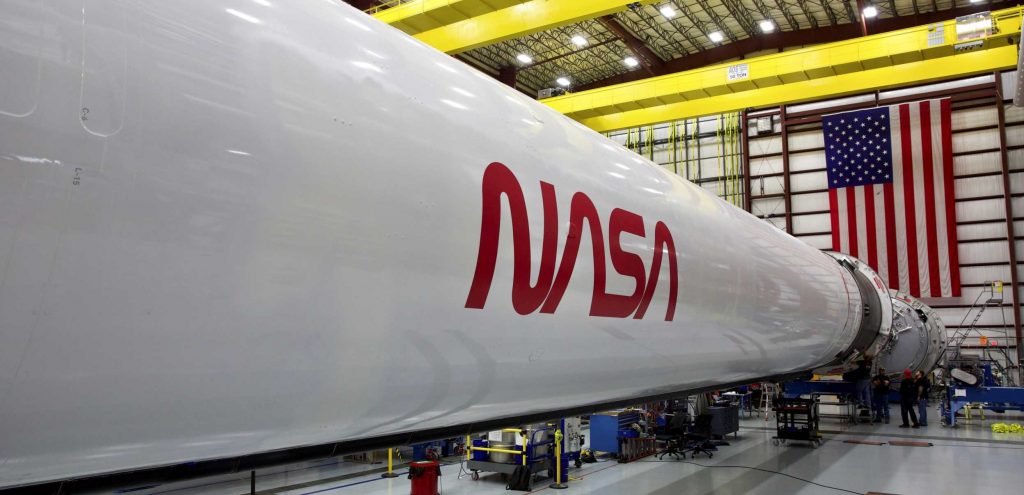
Meanwhile, a brand new Falcon 9 Block 5 booster – B1058 – and expendable upper stage are just shy of ready to go inside SpaceX’s main Launch Complex 39A (Pad 39A) hangar. Both were shipped from California to Florida only after both their Merlin engines and each integrated stage completed static fire acceptance tests in McGregor, Texas. As of April 1st, they appeared to be just shy of fully integrated, with B1058 missing only its titanium grid fins (and possibly landing legs).
Now T-12 days to launch, SpaceX could attach the spacecraft to that Falcon 9 rocket at any moment – if it hasn’t already. Before the rocket is fully ready for launch, SpaceX will need to perform a routine wet dress rehearsal (WDR) and static fire test at Pad 39A – partially unique for Crew Dragon because the spacecraft attached during them. Given that Demo-2 is far from a normal SpaceX launch, Crew Dragon and Falcon 9 could roll out for that critical preflight test at any moment.
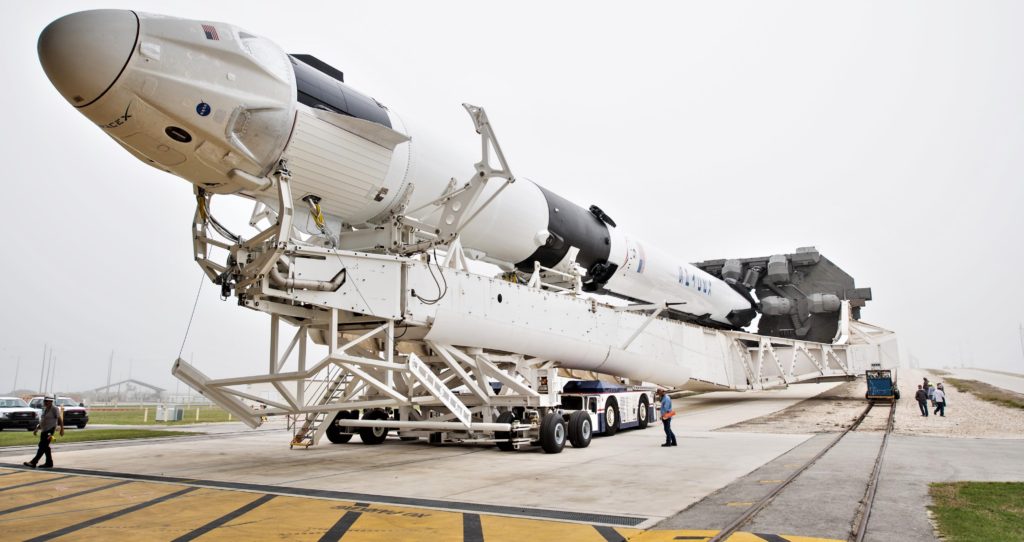
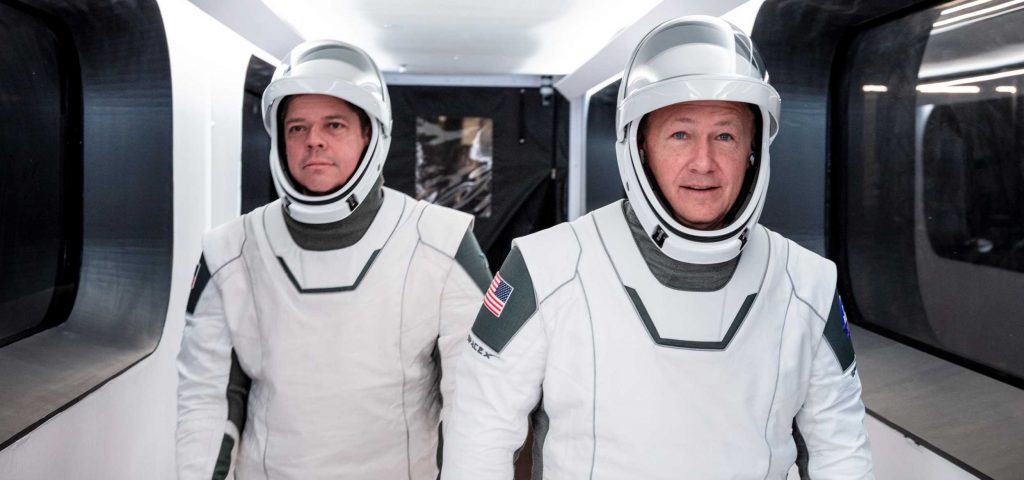
NASA has assigned astronauts Bob Behnken and Doug Hurley to fly Crew Dragon’s inaugural crewed mission to the International Space Station (ISS) and both astronauts have been training more or less 24/7 for the last 12-18 months, as well as advising SpaceX on Crew Dragon’s design. Now, according to SpaceX, those astronauts will be joined by a mosaic image comprised of thousands of photos uploaded by students around the world, ranging from kindergarten to graduate school and more.
Deemed “Class of 2020”, the project is meant to celebrate the class of 2020 – anyone and everyone set to graduate this year. Although unmentioned, the celebration comes at a time when the coronavirus pandemic will almost certainly preclude or dramatically curtail (for good reason) large public gatherings for the sake of public health, disrupting or fully canceling graduation ceremonies around the world. SpaceX says that photos submitted by students will be added to a mosaic of Earth and “will be printed and flown aboard SpaceX’s Crew Dragon spacecraft during its upcoming mission to the International Space Station with NASA astronauts Bob Behnken and Doug Hurley on board.”
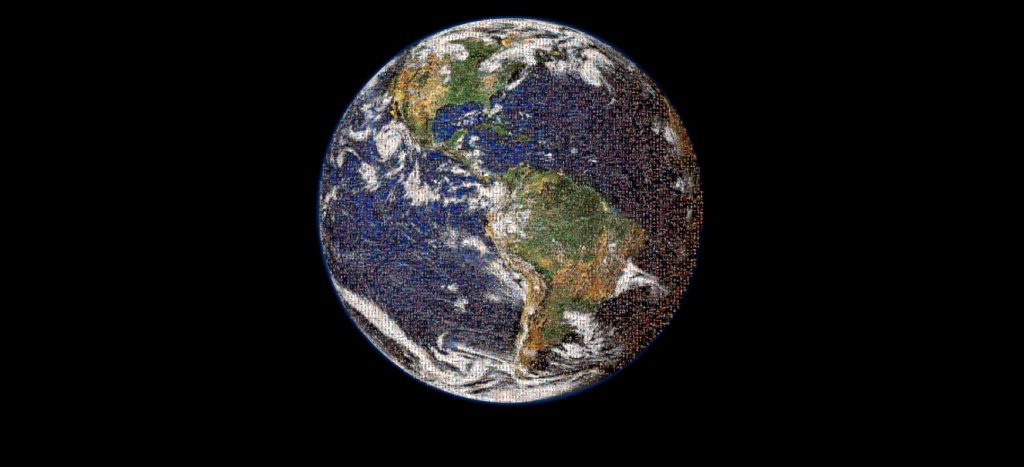
While it won’t replace the events themselves, having a photo physically sent to space certainly won’t hurt for tens of thousands, hundreds of thousands, or maybe even millions of students around the world. If you are a student or know one, you can submit your photo at SpaceX.com/ClassOf2020 before the end of May 20th.

News
Tesla hints at Starlink integration with recent patent
“By employing polymer blends, some examples enable RF transmission from all the modules to satellites and other communication devices both inside and outside the vehicle.”

Tesla hinted at a potential Starlink internet terminal integration within its vehicles in a recent patent, which describes a vehicle roof assembly with integrated radio frequency (RF) transparency.
The patent, which is Pub. No U.S. 2025/0368267 describes a new vehicle roof that is made of RF-transparent polymer materials, allowing and “facilitating clear communication with external devices and satellites.”
Tesla believes that a new vehicle roof design, comprised of different materials than the standard metallic or glass elements used in cars today, would allow the company to integrate modern vehicular technologies, “particularly those requiring radio frequency transmission and reception.
Tesla has recently filed a US patent application on integrating RF transparent materials into the roof structure.
“facilitating clear communication with external devices and satellites”
Tesla fleet is getting @Starlink connectivity integration soon. LFG @Tesla @elonmusk… pic.twitter.com/bLa8YtPLd1
— Chansoo Byeon (@Chansoo) December 9, 2025
Instead of glass or metallic materials, Tesla says vehicles may benefit from high-strength polymer blends, such as Polycarbonate, Acrylonitrile Butadiene Styrene, or Acrylonitrile Styrene Acrylate.
These materials still provide ideal strength metrics for crashworthiness, stiffness for noise, vibration, and harshness control, and are compliant with head impact regulations.
They would also enable better performance with modern technologies, like internet terminals, which need an uninterrupted signal to satellites for maximum reception. Tesla writes in the patent:
“By employing polymer blends, some examples enable RF transmission from all the modules to satellites and other communication devices both inside and outside the vehicle.”

One of the challenges Tesla seems to be aware of with this type of roof design is the fact that it will still have to enable safety and keep that at the forefront of the design. As you can see in the illustration above, Tesla plans to use four layers to increase safety and rigidity, while also combating noise and vibration.
It notes in the patent that disclosed examples still meet the safety requirements outlined in the Federal Motor Vehicle Safety Standards (FMVSS).
Starlink integrated directly into Tesla vehicles would be a considerable advantage for owners. It would come with a handful of distinct advantages.
Initially, the inclusion of Starlink would completely eliminate cellular dead zones, something that is an issue, especially in rural areas. Starlink would provide connectivity in these remote regions and would ensure uninterrupted service during road trips and off-grid adventures.
It could also be a critical addition for Robotaxi, as it is crucial to have solid and reliable connectivity for remote monitoring and fleet management.
Starlink’s growing constellation, thanks to SpaceX’s routine and frequent launch schedule, will provide secure, stable, and reliable internet connectivity for Tesla vehicles.
Although many owners have already mounted Starlink Mini dishes under their glass roofs for a similar experience, it may be integrated directly into Teslas in the coming years, either as an upgrade or a standard feature.
News
Tesla supplements Holiday Update by sneaking in new Full Self-Driving version
It seems Tesla was waiting for the Hardware 4 rollout, as it wanted to also deploy a new Full Self-Driving version to those owners, as it appeared in the release notes for the Holiday Update last night.

Tesla has surprised some owners by sneaking in a new Full Self-Driving version with the wide release of the Holiday Update, which started rolling out to Hardware 4 owners on Friday night.
Tesla has issued a controlled and very slow release pattern with the Holiday Update, which rolls out with Software Version 2025.44.25.5.
For the past two weeks, as it has rolled out to Hardware 3 and older Tesla owners, the company has kept its deployment of the new Software Version relatively controlled.
It seems Tesla was waiting for the Hardware 4 rollout, as it wanted to also deploy a new Full Self-Driving version to those owners, as it appeared in the release notes for the Holiday Update last night.
Tesla Full Self-Driving v14.2.1.25 made its first appearance last night to Hardware 4 owners who are members of the Early Access Program (EAP). It appears to be a slight refinement from FSD v14.2.1, which has been out for a couple of weeks.
Tesla v2025.44.25.5 Holiday update incoming
Also Full Self-Driving v14.2.1.25!!! pic.twitter.com/74D7S0UGXz
— TESLARATI (@Teslarati) December 13, 2025
Many owners welcome the new FSD version, us included, because we’ve been less than impressed with v14.2.1. We have experienced some minor regressions with v14.2.1, especially with Speed Limit recognition, Speed Profile tinkering, and parking performance.
As it stands, Full Self-Driving is still particularly impressive, but Tesla is evidently having an issue with some of the adjustments, as it is still refining some of the performance aspects of the suite. This is expected and normal with some updates, as not all of them are an improvement in all areas; we routinely see some things backtrack every once in a while.
This new FSD version is likely to take care of those things, but it also includes all of the awesome Holiday Update features, which include:
- Grok with Navigation Commands (Beta) – Grok will now add and edit destinations.
- Tesla Photobooth – Take pictures inside your car using the cabin-facing camera
- Dog Mode Live Activity – Check on your four-legged friend on your phone through periodic snapshots taken of the cabin
- Dashcam Viewer Update – Includes new metrics, like steering wheel angle, speed, and more
- Santa Mode – New graphics, trees, and a lock chime
- Light Show Update – Addition of Jingle Rush light show
- Custom Wraps and License Plates – Colorizer now allows you to customize your vehicle even further, with custom patterns, license plates, and tint
- Navigation Improvements – Easier layout and setup
- Supercharger Site Map – Starting at 18 pilot locations, a 3D view of the Supercharger you’re visiting will be available
- Automatic Carpool Lane Routing – Navigation will utilize carpool lanes if enabled
- Phone Left Behind Chime – Your car will now tell you if you left a phone inside
- Charge Limit Per Location – Set a charge limit for each location
- ISS Docking Simulator – New game
- Additional Improvements – Turn off wireless charging pad, Spotify improvements, Rainbow Rave Cave, Lock Sound TRON addition
Tesla also added two other things that were undocumented, like Charging Passport and information on USB drive storage to help with Dashcam.
Cybertruck
Tesla updates Cybertruck owners about key Powershare feature

Tesla is updating Cybertruck owners on its timeline of a massive feature that has yet to ship: Powershare with Powerwall.
Powershare is a bidirectional charging feature exclusive to Cybertruck, which allows the vehicle’s battery to act as a portable power source for homes, appliances, tools, other EVs, and more. It was announced in late 2023 as part of Tesla’s push into vehicle-to-everything energy sharing, and acting as a giant portable charger is the main advantage, as it can provide backup power during outages.
Cybertruck’s Powershare system supports both vehicle-to-load (V2L) and vehicle-to-home (V2H), making it flexible and well-rounded for a variety of applications.
However, even though the feature was promised with Cybertruck, it has yet to be shipped to vehicles. Tesla communicated with owners through email recently regarding Powershare with Powerwall, which essentially has the pickup act as an extended battery.
Powerwall discharge would be prioritized before tapping into the truck’s larger pack.
However, Tesla is still working on getting the feature out to owners, an email said:
“We’re writing to let you know that the Powershare with Powerwall feature is still in development and is now scheduled for release in mid-2026.
This new release date gives us additional time to design and test this feature, ensuring its ability to communicate and optimize energy sharing between your vehicle and many configurations and generations of Powerwall. We are also using this time to develop additional Powershare features that will help us continue to accelerate the world’s transition to sustainable energy.”
Owners have expressed some real disappointment in Tesla’s continuous delays in releasing the feature, as it was expected to be released by late 2024, but now has been pushed back several times to mid-2026, according to the email.
Foundation Series Cybertruck buyers paid extra, expecting the feature to be rolled out with their vehicle upon pickup.
Cybertruck’s Lead Engineer, Wes Morrill, even commented on the holdup:
As a Cybertruck owner who also has Powerwall, I empathize with the disappointed comments.
To their credit, the team has delivered powershare functionality to Cybertruck customers who otherwise have no backup with development of the powershare gateway. As well as those with solar…
— Wes (@wmorrill3) December 12, 2025
He said that “it turned out to be much harder than anticipated to make powershare work seamlessly with existing Powerwalls through existing wall connectors. Two grid-forming devices need to negotiate who will form and who will follow, depending on the state of charge of each, and they need to do this without a network and through multiple generations of hardware, and test and validate this process through rigorous certifications to ensure grid safety.”
It’s nice to see the transparency, but it is justified for some Cybertruck owners to feel like they’ve been bait-and-switched.








